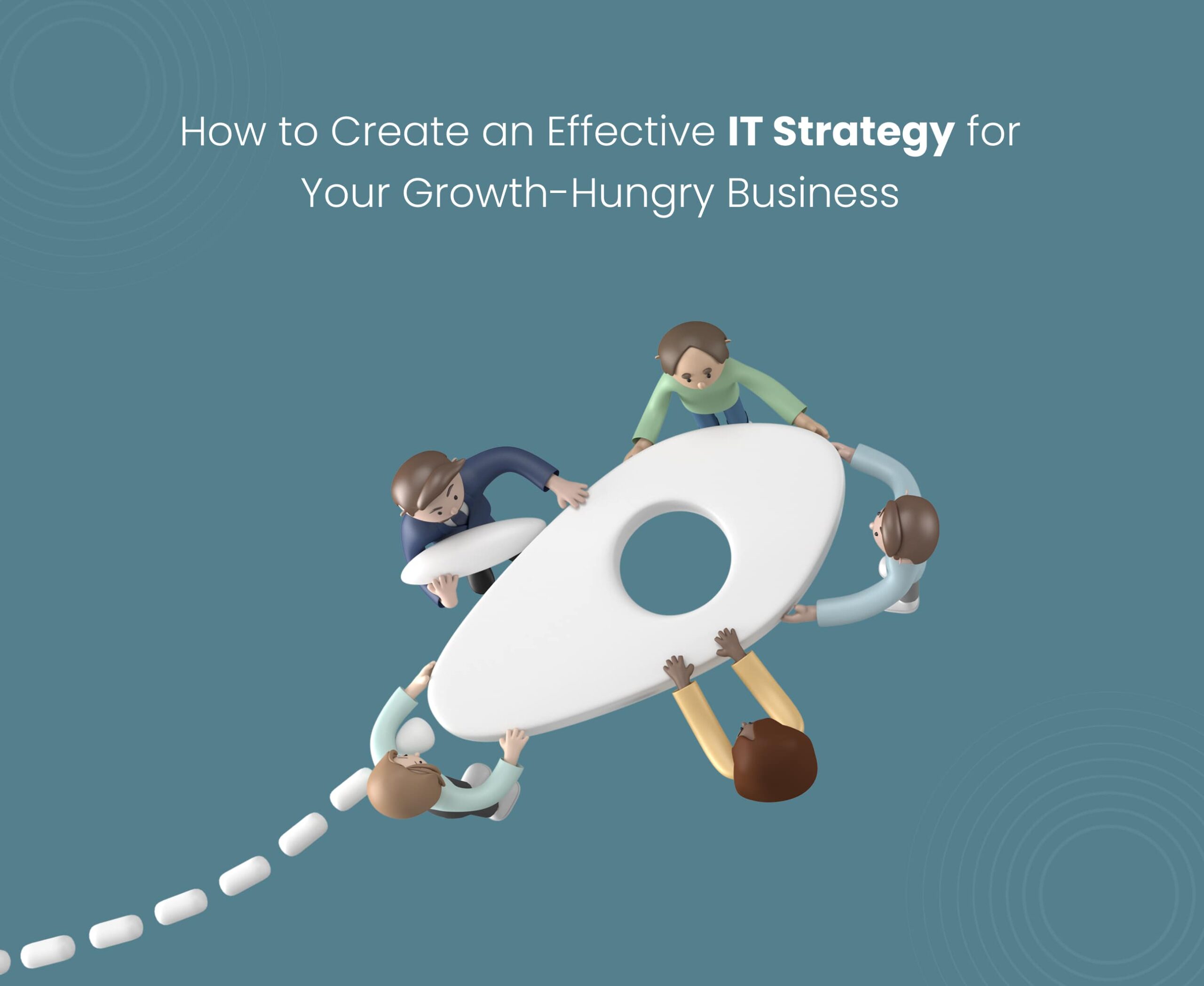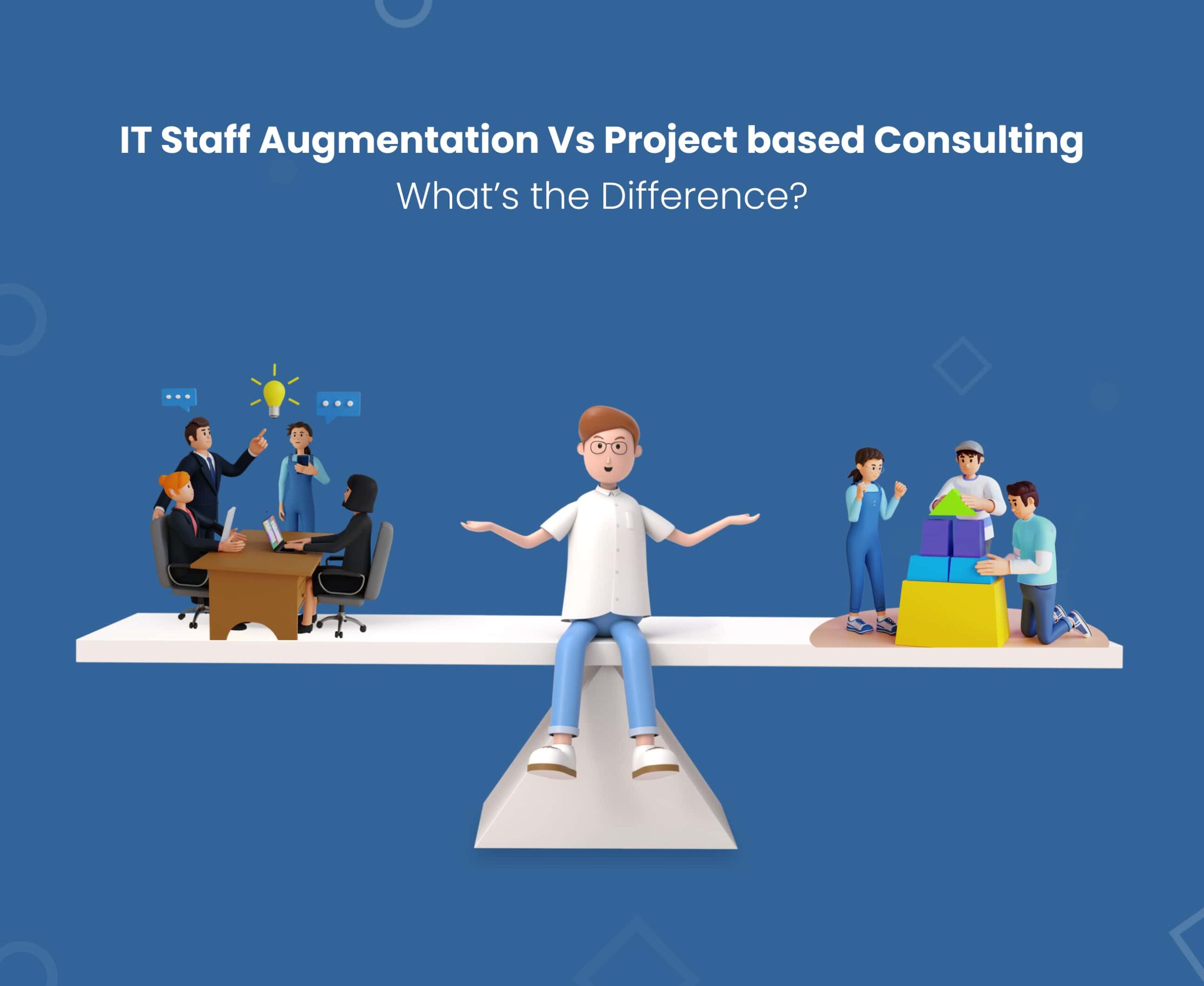Many IT departments are so busy that they operate reactively, often giving the green light to various initiatives without proper consideration. This often leads to focusing on ad-hoc projects with immediate goals rather than taking a proactive approach to utilizing technology for the company’s overall strategic objectives. With the increasing number of IT initiatives being undertaken by organizations, this reactive approach is both unproductive and detrimental to growth.
You need a comprehensive IT strategy that provides a broad, long-term perspective on the organization’s technological needs, as it is the best way to guide the various projects. The purpose of this blog post is to provide practical guidance and best practices for IT entrepreneurs and CTOs on how to create an effective IT strategy that supports the growth and scalability of their businesses.
Table of Contents
Definition of an IT Strategy
According to Gartner, IT strategy is the discipline that defines how IT will be used to help businesses win in their chosen business context. In simple words, an IT strategy serves as a GPS for your business’s tech journey. It guides you through the twists and turns of the technology landscape, ensuring that you’re headed in the right direction to achieve your business goals.
Importance of an IT Strategy for Your Growth-hungry Business
Your business is like a ship in a stormy sea; it needs a steady hand on the wheel to navigate the rough waters of competition. An IT strategy serves as that steady hand, providing a clear direction and enabling the business to reach new heights. Without a clear IT strategy, any company is like a ship without a compass, drifting aimlessly. A solid IT strategy can help your business scale and reach new heights. It helps to optimize operations, increase efficiency and productivity, and to stay competitive in the market.
When it comes to staying competitive in the market, mobile application development has become a critical component of any business’s IT strategy. With the increasing use of mobile devices, having a mobile application can provide a competitive edge, as well as offer better engagement and customer experience. By leveraging the latest technologies and development practices, businesses can stay ahead of the competition and provide a superior experience to their customers.
Advantages of a Clearly Defined IT Strategy
- Decrease IT expenses with a focused approach that delivers results.
- Streamline operations to improve information sharing, collaboration, and productivity.
- Leverage AI and other technological advances to gather, manage and analyze data per the IT strategy.
- Improve IT resilience to reduce expenses and minimize service disruptions.
- Promote smarter decision-making within the IT team.
- Foster transparent communication between IT and business leaders.
- Ensure enterprise-wide data protection and effectively secure sensitive customer information.
Why Does Any Business Need A Well-defined IT Strategy?
To Optimize Operations
An IT strategy helps to optimize operations by identifying areas where technology can improve efficiency, reduce costs, and streamline processes. It can be compared with a mechanic for a car; if we don’t have good and regular maintenance of the vehicle, it will not run smoothly, and eventually, it will break down. With the right IT strategy in action, a business’s operations run smoothly and do not hinder the growth.
To Increase Efficiency and Productivity
A well-defined IT strategy can help increase efficiency and productivity by identifying the right technologies and solutions to support the business. It can be compared with a toolbox; if we have all the right tools in the right place, we can complete a job quickly and efficiently. Similarly, with the right technology, a business can work faster and smarter, enabling it to scale and grow.
To Stay Competitive
A well-defined IT strategy can help a business stay competitive. It helps identify critical technologies and trends that will support the business’s growth and ensure that the company stays ahead of the curve. It can be compared to a chess game; if we don’t anticipate our opponents’ moves, we will lose the game. Any business must be able to anticipate and respond to changes in the market.
To Achieve Business Goals
An IT strategy helps to achieve business goals by aligning automation investments with the business’s objectives. It can be compared with a puzzle; if all the pieces are not in the right place, the puzzle will not be complete. Similarly, without a well-defined IT strategy, a business’s technology investments may not be aligned with its goals, and it may not be able to achieve its objectives.
Requirements for Developing an IT Strategy For Your Business
Understand Your Business
Identify your business goals and objectives
To create an effective IT strategy, it’s essential to start by understanding your business. This includes identifying your business goals and objectives. Defining these at the start of a journey can get you way ahead of those who start headfirst. A clear understanding of your business goals helps to observe how technology can support them.
Assess your current IT infrastructure and capabilities
Once you clearly understand your business goals, the next step is to evaluate your existing IT infrastructure and capabilities. It is a crucial step before starting a project. By understanding what technology you already have in place, you can identify gaps and areas for improvement.
Identify gaps and areas for improvement
After assessing your current IT infrastructure and capabilities, it’s important to identify gaps and areas for improvement. Identifying what tools you need to complete a project. Analyzing these gaps allows you to determine the technology needed to support your business goals.
Ask these questions to assess your current IT infrastructure and capabilities
- Does our website meet the needs of our customers and handle high traffic?
- Are our inventory management and customer data systems up-to-date and integrated?
- Are we utilizing cloud technology to increase efficiency and flexibility?
- Are our security measures sufficient to protect our sensitive data? – Are we using appropriate tools to make data-driven decisions?
- Are we keeping up with the latest tech trends that could benefit our business?
- Are we able to scale our tech infrastructure as our business grows?
Answering these questions can help you identify gaps and areas for improvement in your current IT infrastructure and capabilities.
How Do I Develop an IT Strategy?
To begin with, establish a comprehensive tech architecture comprising major software, hardware, and other tools that will be utilized. Next, contemplate any department-specific technology that might be mandatory to accomplish business objectives, like specialized financial or HR software. Lastly, ponder how the different components in your architecture work together and what procedures will manage their combination.
Maintain all this information in a shared spreadsheet or other documents that offer transparent visibility into your architecture, the expenses incurred, and the users. IT strategy templates are available to assist with this step if you prefer not to create your own.
Implementing Your IT Strategy
Assigning roles and responsibilities
With the IT strategy defined and a plan in place, it’s time to start implementing it. The first step is to assign roles and responsibilities to your team members. Everyone must know their role. This helps ensure that the IT strategy is implemented effectively and that everyone knows their responsibilities.
Defining a project plan and timeline
With roles and responsibilities defined, the next step is to define a project plan and timeline. Develop a well-planned schedule for your project. By outlining the steps that need to be taken, the resources required, and a timeline for implementation, you can ensure that the IT strategy is implemented on time and within budget.
Communicating the IT strategy to stakeholders
It’s important to keep all stakeholders informed about the IT strategy and its implementation. By communicating, you can ensure that every stakeholder is aware of the changes that are taking place and how they will be affected. This helps to build buy-in and support for the IT strategy and can also help to prevent any unexpected roadblocks.
Measuring Success
Setting Metrics To Measure The Success Of Your IT Strategy
Once the IT strategy is implemented, measuring its success is important. Evaluate the performance of a new product or service. By setting metrics to measure the success of your IT strategy, you can find out whether it’s achieving its intended goals and objectives.
Tracking Progress & Making Adjustments As Needed
With metrics in place, the next step is to track progress and make adjustments as needed. By monitoring progress, you can identify areas where the IT strategy is working well and where improvements are needed. This helps ensure that the IT strategy achieves its intended goals and objectives.
Communicating Results To Stakeholders
It’s important to communicate the results of your IT strategy to stakeholders. Share the performance of a product or service. By communicating the results, you can demonstrate the value of the IT strategy and build support for future investments. This can also help to identify areas where improvements can be made and ensure that the IT strategy is aligned with the business goals.
Famous Companies Who Successfully Implemented IT Strategies and Automation
Here are a few examples of companies that have successfully implemented IT strategies:
Walmart

Walmart is a retail giant that has improved supply chain management and optimized its inventory. The company uses technology such as RFID (Radio Frequency Identification) to track inventory in real-time and uses data analytics to optimize its supply chain and improve the availability of products in its stores.
McDonald’s

McDonald’s is a fast-food chain that has successfully enhanced its customer experience. The company has developed mobile ordering and payment systems and self-service kiosks in its restaurants to make it easier for customers to order and pay for their meals.
Marriott International

Marriott International is a hotel chain that has refined its guest experience. The company developed a mobile app that allows guests to check in and out, order room service, and request amenities such as extra pillows or towels.
Delta Air Lines

Delta Air Lines is an airline that has successfully implemented an IT strategy to improve its operational efficiency. The company uses technology such as RFID baggage tracking, and mobile boarding passes to streamline operations and reduce customer wait times.
American Express

American Express is a financial services company that has boosted its customer service with fraud prevention. The company uses machine learning algorithms to detect and prevent fraudulent transactions and has developed mobile apps and chatbots to provide personalized customer support.
Conclusion
An IT strategy is not a one-time project but an ongoing process. By regularly reviewing and adapting necessary changes, you can ensure that it continues to support the growth and scalability of your business. This means assessing progress, identifying areas for improvement, and making changes as needed.
Now that you understand the importance and process of creating an effective IT strategy, it’s time to take action. As IT entrepreneurs and CTOs, you have the power to shape the technology that drives your business. Take the first step by identifying your business goals, assessing your current IT infrastructure, and developing a plan to implement and maintain an IT strategy that supports your business.




